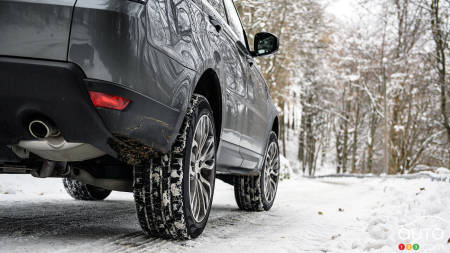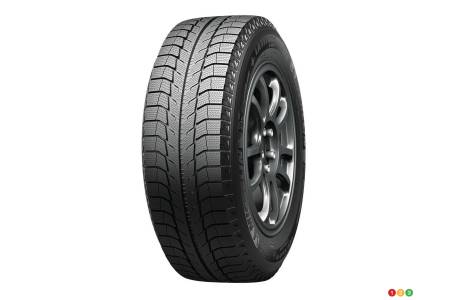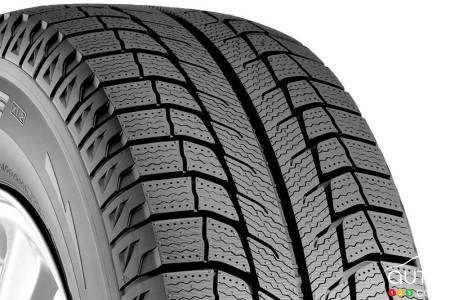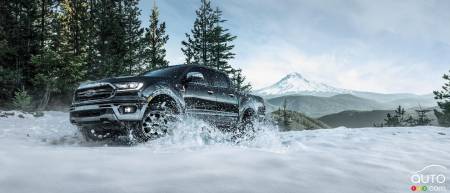(This guide is authored by a regular contributor to the specialized Tire News (Pneu Mag) magazine, which he co-founded)
Auto123 presents our guide to the best winter tires in Canada in 2019-2020. Discover the best winter tires for SUVs and pickup trucks!
Consult as well our Guide to the best winter tires for cars in Canada for 2019-2020
It’s time to face facts. The wonderful summer we’ve enjoyed so much is behind us and wintertime is on the horizon. Its appearance is relevant particularly to vehicle owners who have to plan to have their rides equipped with winter tires. In some parts of Canada this ritual is not mandatory, but no matter where you live, automotive experts will tell you it’s a smart thing to do. After all, we’re now so many years removed from the snow grips of the past, and today’s winter tires are designed to excel on icy roads and wet surfaces, and in the extreme cold.
Discover Shopicar! All new makes and models and all current promotions.
In Quebec
Motorists in Quebec should definitely take note of the changed deadline for having approved winter tires fitted on their vehicle this year; instead of December 15 as previously, it is now mandatory to have approved winter tires on your SUV or truck by December 1.
In certain parts of British Columbia, meanwhile, winter tires (or chains) are required as of October 1!
In both those provinces, if you’re a visitor or just passing through the province on the way somewhere else, you are not subject to the regulations in place.
The Quebec law, by the way, applies to vehicles weighing 10,000 lb or less (with maximum load). In the case of pickups, that includes Class 2 trucks like the Ford F-250 (and the E-250 and T-250 vans), Chevrolet Silverado and GMC Sierra 2500 (including the Chevy Express and GMC Savana 2500 commercial vans), Ram 2500 (and Promaster 2500), as well as other similar models like the Mercedes-Benz Sprinter 2500.
Obviously, we’re talking for these vehicles about LT (Light Truck)-type vehicles, and it would be hugely unwise to try to place P-type tires for passenger cars on these bigger, more-rugged models, the way many people actually did with pickups back in the day.

On the other hand, several recommendations found in our guide to car tires apply as well to trucks, especially to SUVs and crossovers. In these two segments, of course, many vehicles are built on platforms also used for cars, and share many of their mechanical components. You can definitely find some valid advice for tires for your utility vehicle in our car tire guide.
The tires included in this guide have been tested on press vehicles or on privately owned vehicles. Others are brand-new products that have yet to be tested but are evolutions of tires we already know well. In general, you can safely assume the new versions are superior to the models they’ve replaced.
Compromise solution
We feel it’s important to reiterate that by definition, winter tires constitute a compromise solution, which do some things extremely well but others less so. Unlike summer tires the talents of which must include handling dry pavement or wet pavement, winter tires have to be able to deal with extreme cold, warm road surfaces, snow, ice and slush, and any combination of the above.
Winter-approved “all-season” tires
As in the domain of car tires, a new configuration of winter tire is gaining traction on the market. These would be all-season tires that have been adapted to meet certification requirements for approval as winter tires. Thus these products carry the official logo for winter-approved tires.

In some cases drivers will probably be satisfied with one of these, but it’s taking a chance to try them if you live in more mountainous regions. We hope to take a closer look at this category of tires in the coming month.
Finally, take note that the tires included here are not presented in order of preference. As well, you’ll see that there are no Chinese-made tires included here; again, we hope to go into detail regarding these tires in the near-future once we’ve had the opportunity to evaluate them properly.
Here then is our guide to the best winter tires in Canada for 2019-2020:
Michelin Latitude X-Ice

French manufacturer Michelinf promised us a whole new Latitude winter tire, at the same time as it set about upgrading its plant in Nova Scotia. As of this moment, we’ve seen nothing concrete from the tire maker. Even if it stocked stores with the new product tomorrow, we wouldn’t have been able to test it in time for this early-winter buying season.
Better then to talk about the current LTX tires for pickups (with 10-ply carcass) and Latitude X-Ice tires; the latter have been a bigger hit with consumers than the X-Ice 3 for cars. This might be because Latitude tires are often used with all-wheel-drive vehicles or those with on-demand AWD functionality.
Available in a wide range of sizes, the Latitude X-Ice tire is also known for its durability which is a good selling point for motorists. They’re less appropriate, however, on rear-wheel-drive vehicles.





